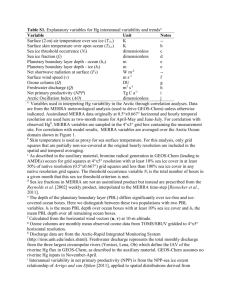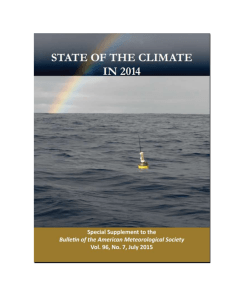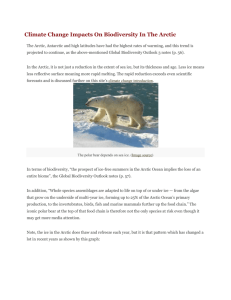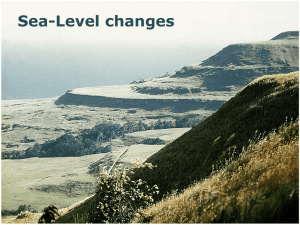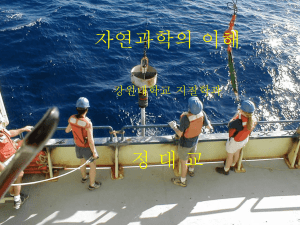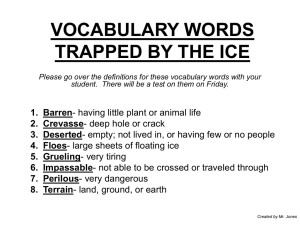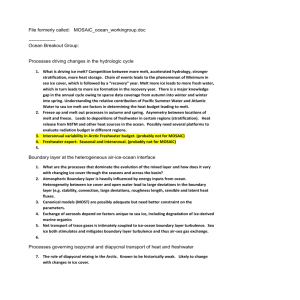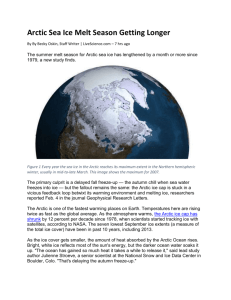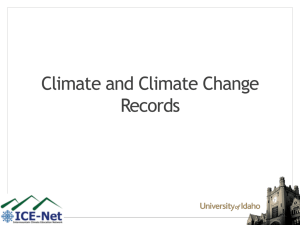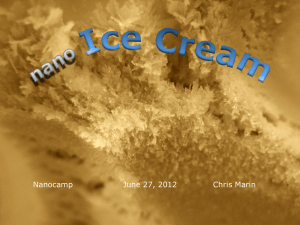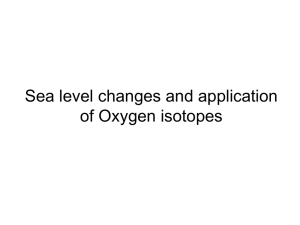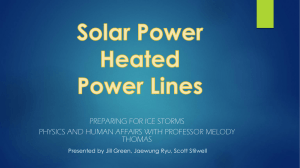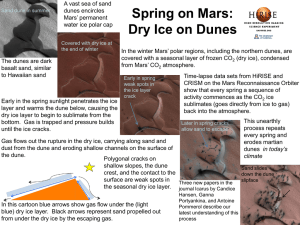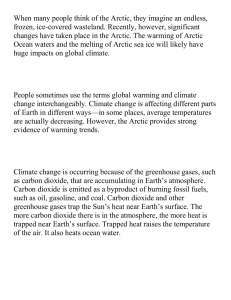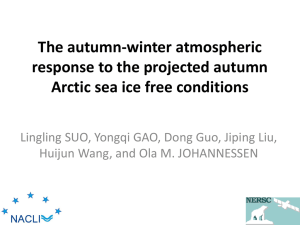Ocean systems
advertisement
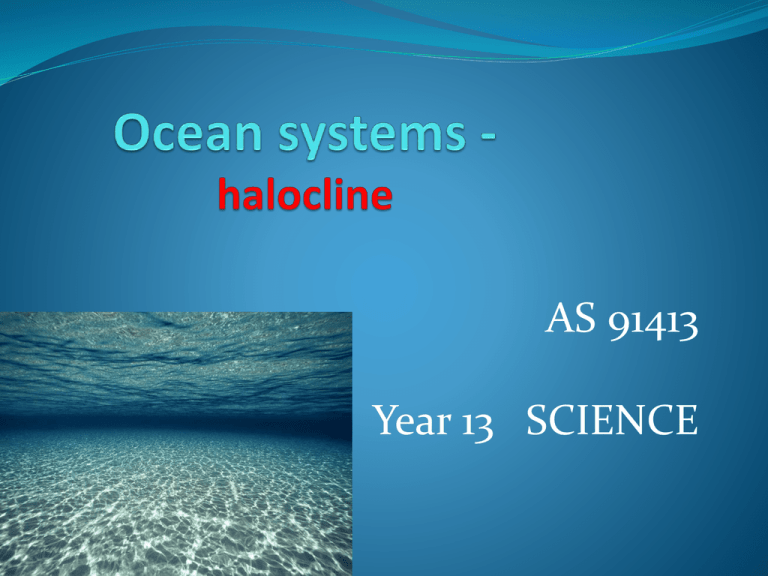
AS 91413 Year 13 SCIENCE Ocean systems – course topics 1. Ocean composition 2. Ocean circulation 3. The carbon cycle 4. Transport matter, energy – heat, tides and waves 5. Southern Oscillation – El Nino & La Nina Ocean systems – course topics 1. Ocean composition – temperature, density, salinity, pressure and gradients 2. Ocean circulation – currents, thermohaline circulations, Coriolis effect 3. The carbon cycle – physical pumps, biological pumps, carbonate and CO2 chemistry 4. Transport matter, energy – heat, tides , waves and Tsunamis 5. Southern Oscillation – El Nino & La Nina In the plot, one can discern three layers: Halocline -arctic The halocline is a 150m deep band of water starting at 50m depth of steeply rising salinity Three layers: Mixed top layer of The top 50m mixed layer has low salinity < 33 PPT Originates from inflow of freshwater of melting glaciers and terrestrial rivers in Siberia, Alaska & Canada during summer The temperature is -1.8 °C, which is very near to the freezing point, chilled by cold air. This top layer blocks heat transfer from the warmer, water below from the Gulf stream into the ice sheet This insulation has considerable effect on the thickness of the ice. Arctic & Antarctic Haloclines In high latitudes of the Arctic Ocean, Bering sea and the Southern Ocean, the surface waters are actually colder than the deep waters. Here the halocline is responsible for maintaining water column stability- isolating the surface waters from the deep waters. I n these regions, the halocline is important in allowing for the formation of sea ice Arctic ice cap at North Pole Dark blue areas cold water -1.8 to 1 C Pale blue ice melt, floes, ice bergs White Sea ice Arctic ice cap at North Pole Dark blue areas cold water -1.8 to 1 C Pale blue ice melt, floes, ice bergs White Sea ice Nuclear submarine & polar bears Ice formation in winter As ice forms from sea water the salts are left behind in the water. The ice is fresh As a result the salinity increases , becoming more dense an falling to greater depths. Summary Warm water heated by the sun lies near tropical and equatorial oceans close to the ocean surface and is less dense Cold water lies near the poles away from direct sun and is deeper down Thermocline is the rapid change in temperature with depth which is found in the pycnocline layer. Large currents move around the world mixing cold water with warm with many effects on climate, and plankton, plants and animals living in the sea. Cross – section through the ice cap Bering Strait Polar Ice cap Arctic Halocline is 50-200m thick 50-200m

